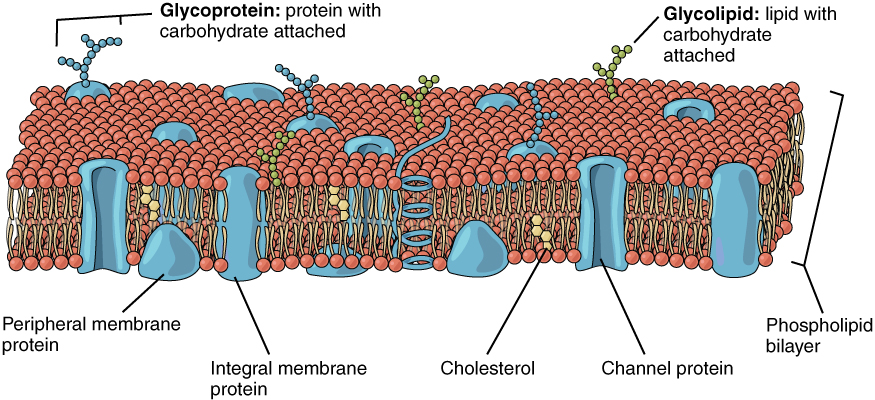
Describe the structure of phospholipids. How are they arranged in the cell membrane?
Answer
479.7k+ views
Hint: Phospholipids are lipids that are derived from fatty acids and alcohols like all other fatty acids. There is a phosphate group at the end of the alcohol which can be substituted with other organic molecules such as ethanolamine, choline and serine.
Complete answer:
Synthesis of phospholipids takes place on the cytosolic side of the ER membrane. Phospholipids are amphiphilic molecules consisting of a hydrophilic head which is most often negatively charged due to the presence of the phosphate group and a hydrophobic end consisting of two tails which are made up of long chain fatty acid residues. In the presence of an aqueous solution the phospholipids arrange themselves in a way which is thermodynamically most favorable. The hydrophilic head faces the aqueous solution and the tails face the inner side often forming a circular structure known as micelles. Phospholipids are the major constituents of cell membranes where they form a bilayer that is advantageous to the cells. The bilayer is composed of two layers of phospholipids with their heads facing outward and the hydrophobic tails sandwiched in between them. The bilayers can undergo phase transitions according to change in temperatures which also alters the chemical property of the bilayer.

Note: Lipid bilayers are generally few nanometers in width. Bilayers makes the cell membrane semi permeable in nature as it does not pass all substances through it. They are impermeable to all water soluble molecules, ions, large molecules such as proteins, it only allows few gases and small uncharged molecules to pass through it.
Complete answer:
Synthesis of phospholipids takes place on the cytosolic side of the ER membrane. Phospholipids are amphiphilic molecules consisting of a hydrophilic head which is most often negatively charged due to the presence of the phosphate group and a hydrophobic end consisting of two tails which are made up of long chain fatty acid residues. In the presence of an aqueous solution the phospholipids arrange themselves in a way which is thermodynamically most favorable. The hydrophilic head faces the aqueous solution and the tails face the inner side often forming a circular structure known as micelles. Phospholipids are the major constituents of cell membranes where they form a bilayer that is advantageous to the cells. The bilayer is composed of two layers of phospholipids with their heads facing outward and the hydrophobic tails sandwiched in between them. The bilayers can undergo phase transitions according to change in temperatures which also alters the chemical property of the bilayer.

Note: Lipid bilayers are generally few nanometers in width. Bilayers makes the cell membrane semi permeable in nature as it does not pass all substances through it. They are impermeable to all water soluble molecules, ions, large molecules such as proteins, it only allows few gases and small uncharged molecules to pass through it.
Latest Vedantu courses for you
Grade 11 Science PCM | CBSE | SCHOOL | English
CBSE (2025-26)
School Full course for CBSE students
₹41,848 per year
Recently Updated Pages
Master Class 10 Science: Engaging Questions & Answers for Success

Master Class 10 Social Science: Engaging Questions & Answers for Success

Master Class 10 Maths: Engaging Questions & Answers for Success

Master Class 10 English: Engaging Questions & Answers for Success

Class 10 Question and Answer - Your Ultimate Solutions Guide

Master Class 9 General Knowledge: Engaging Questions & Answers for Success

Trending doubts
State and prove Bernoullis theorem class 11 physics CBSE

1 ton equals to A 100 kg B 1000 kg C 10 kg D 10000 class 11 physics CBSE

State the laws of reflection of light

One Metric ton is equal to kg A 10000 B 1000 C 100 class 11 physics CBSE

Difference Between Prokaryotic Cells and Eukaryotic Cells

1 Quintal is equal to a 110 kg b 10 kg c 100kg d 1000 class 11 physics CBSE




